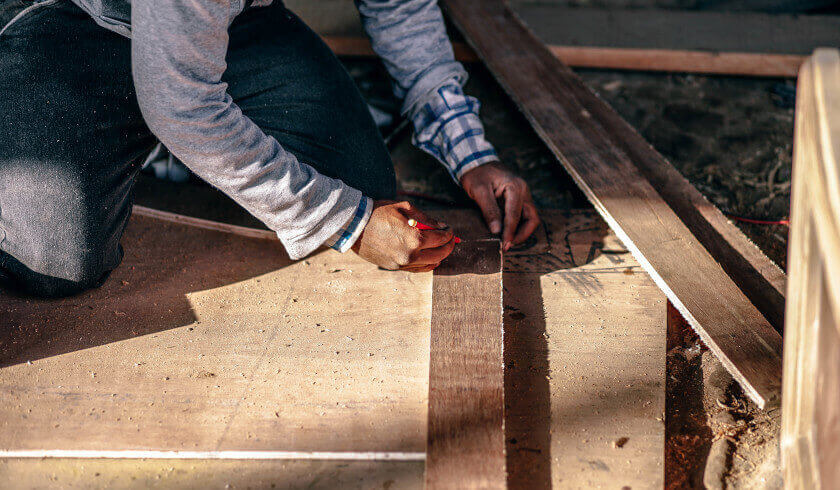3 tips when renovating for profit
Regardless of your endgame, there’s one iron-clad mantra you must make yours if you wish to come out ahead when you are doing renovation work: this is a project for profit, it is not your home.

By adopting these three habits, you’ll avoid a heap of heartache.
1. Keep impeccable records of costs
Renovation projects require a keen eye for detail and the ability to stay on top of costs and timelines – because financial benefits and penalties flow from your ability to watch both the dollars and minutes.
Make sure you track every cent going out the door. Whether it’s money spent on the pest inspection during the settlement phase, what you paid for handles for the new cabinets, interest payments to the bank and the advertising spend when it came time to sell – every cent is important.
Why? Well, first, every bit of money you hand to someone else for goods or services is coming straight off your bottom line.
Tracking costs will help you stay on top of the cash flow and translate into the frugal habits that will maximise your return on every single dollar.
Second, tracking expenses is going to be a lesson in costing projects that will be etched into your memory bank.
When you move onto the next project and an electrician tries to stitch you up with an over-the-top quote, you’ll be onto him.
Finally, these figures will all be, in some fashion, deductible come tax time. Avoid the stress when June 30 approaches.
Instead, document progressively so your accountant knows exactly how the project played out.
My other tip about costs is to get a depreciation schedule ASAP if you are retaining the property in your portfolio.
Depreciation schedules allow you to offset a percentage of the cost of a fitting or fixture as a progressive “wear and tear” amount.
Talk to a specialist quantity surveyor about putting together a schedule. The cost of the report is often recouped in the first year.
Best of all, you only need one report for the entire life cycle of the property investment, so it’s a cost-effective activity.
2. Take a lot of before and after photos
I bloody love property, so you won’t be surprised to hear that I am snap happy with my renovations and builds.
I suggest you adopt the same approach. Comprehensive photos before, during and after the project are more than simply a keepsake.
If you are looking to sell the property, these snaps can form part of an effective marketing campaign. I know of journalists who have profiled renovations for their newspapers, simply because the before and after photos were so dramatic.
The other reason for having lots of photos is even more practical. If you are looking to retain the property, you will be visiting your financier for a revaluation. Supplying photos (along with your comprehensive documentation of costs) can help your case when arguing for an increase in value.
While a valuer will base their assessment on comparable sales and what they see during the inspection, your photos can help paint the picture.
Valuers will take note of what you paid for the property, which in this case is pre-renovation. Happy snaps prove you have put a heap of work into the project to elevate the equity.
3. Do what you can, but outsource the rest
Most of us can wield a paintbrush and dig a hole, but there are times when you should sit back and leave it to the experts.
The first instance is for those obvious tasks that you are wholly unqualified to do such as electrical and plumbing work. Otherwise the outcome is bound to be a disaster, whether it’s work that will need to be ripped out and replaced or, worse, a hospital visit.
Know your skill limits and seek assistance. If you do want to try tiling or wallpaper hanging, at the very least do a short course and see how you get on. DIY can be satisfying, but stay safe and smart.
The second reason to outsource comes back to the opportunity cost. One of my clients, who is also a mate, talks about the time they did a small renovation prior to the birth of their first child.
This professional couple weren’t new to doing some handiwork, so the idea of painting the baby’s room didn’t seem too daunting.
So, they went ahead. Every weekend and most spare evenings for three weeks, they sanded the walls, filled the gaps and prepared the surface. They taped up windows and light fixtures, moved furniture and placed drop sheets throughout. Then they painted: undercoat, first coat and second coat.
Their miscalculation? The couple were both highly paid professionals whose hourly rate was very impressive. They also had precious little spare time – so for close to a month, every minute seemed to be spent in that room. It became more a prison than a project.
Once done, my mate admitted it was the worst paint job he’d ever seen – and he was a property professional.
The kicker? This same couple had their whole house painted a year later, when they decided to move out but retain the home as an investment.
Their contractors completed the job in five days. It looked excellent for the tenants. On top of that, the painters did the job for half of what this pair would have earned instead of doing the baby’s room.
They could have worked the equivalent hours, paid painters and still been well ahead in their bank balance.
Know your worth and how best to spend your time – or live in regret and have a tale of sorrow to tell your mates. It’s your choice.
